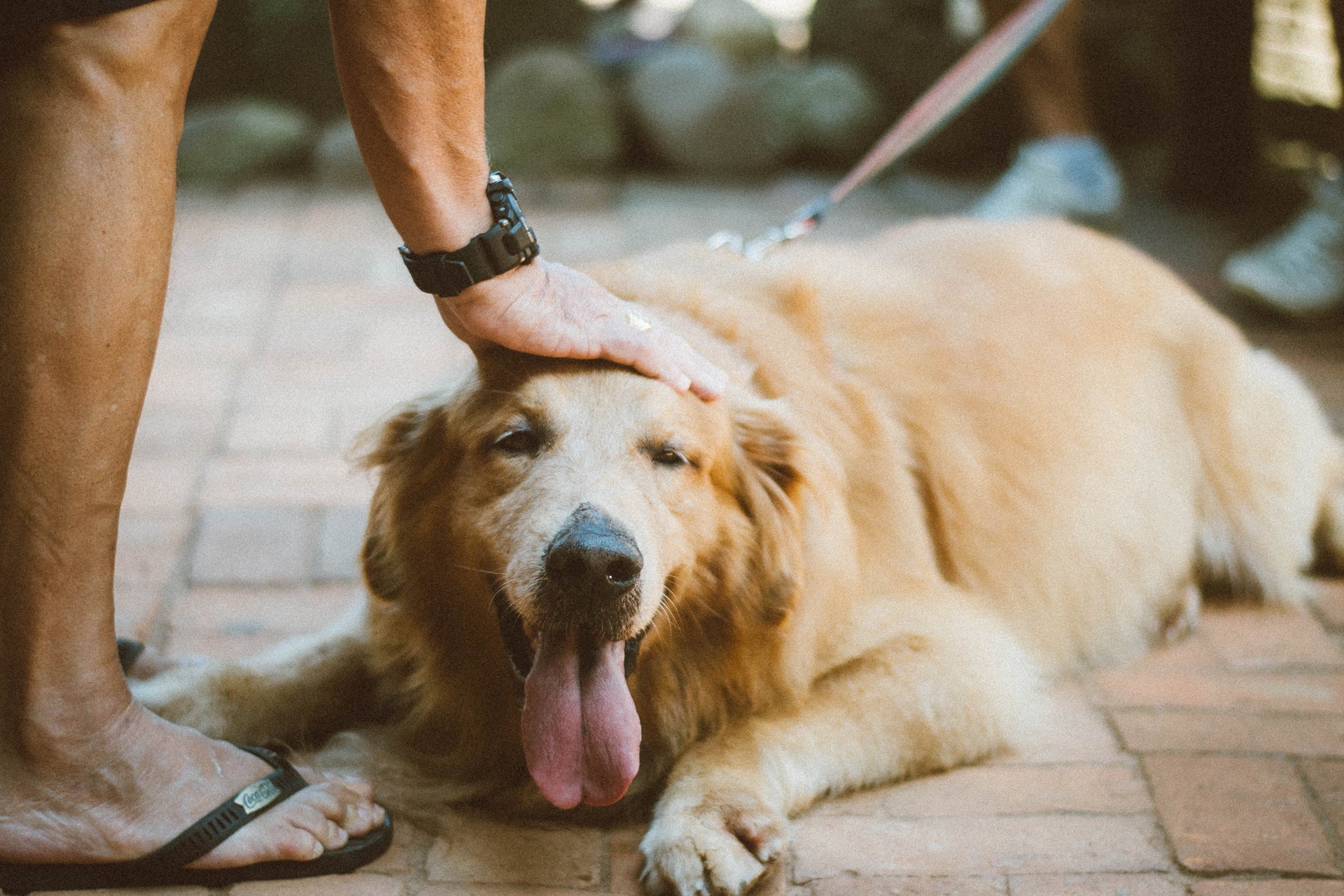How to use the dog body condition score scale
April 20, 2021

Published: April 2021 | Updated: July 2023
The Association for Pet Obesity Prevention determined that approximately 54% of pets in the United States are overweight or obese. That may not sound significant, but if you think about it, that means one out of two dogs is experiencing issues with obesity.
Skin infections, high blood pressure, heart disease, immune suppression, diabetes, orthopedic and arthritic disorders, and even certain types of cancer are all risks that overweight pets face, as well as increased surgical and anesthetic risk.
Weight management can significantly improve your pet's quality of life. It may help minimize or remove the need for some drugs to treat medical conditions, improve cardiovascular function, enhance your dog's level of activity, and reduce or eliminate stress on joints (which is particularly important for pets with arthritis).
What is Dog Body Condition Scoring?
In humans, published charts like the Body Mass Index (BMI) can help determine the optimal weight for a particular body size. However, since our dogs' body sizes and shapes differ so much, these charts aren't as useful in veterinary medicine. Instead, veterinarians use a body condition score (BCS) system to visually determine our dogs' body mass index.
The BCS system is a very subjective classification that is used to standardize your dog's weight. The information obtained from the body score chart helps veterinarians and nutritionists with the development of a diet and exercise regimen that is tailored to your pet's body, activity level, and lifestyle.
Body condition score for dogs typically ranges on a scale from 1 to 5 or 1 to 9. The 1-9 scale is used by many practitioners in the industry. Veterinarians and other experts can help determine small shifts in your pet's weight with this larger scale. Pets are rated on a scale of 1 to 9 out of 9, with 5 being the ideal body weight.
The Dog Body Condition Score Scale is as Follows:
1: Emaciated: Ribs, spine, and hip bones are visible from a distance. No noticeable body fat and an obvious lack of muscle.
2: Very thin: Ribs, spine, and hip bones are easily visible. No body fat seen or felt and minimal muscle mass.
3: Thin: Ribs can be felt and seen with very little profound fat. The top of the spine is visible, and the hip bones may or may not be visible.
4: Underweight: With only a thin layer of fat covering the ribs, they can be felt easily. As viewed from above, the waist is easily discernible. When viewed from the side, the abdomen appears tucked up behind the rib cage, which is known as an "abdominal tuck."
5: Ideal: Well-proportioned body mass. Ribs can be easily felt without excess fat covering. Waist can be observed behind the ribs when viewed from above. Abdominal tuck is present.
6: Overweight: Ribs can be felt through a slight excess fat covering. Waist is visible from above, but not prominent. Abdominal tuck is present.
7: Heavy: Ribs are difficult to feel under a heavy fat covering. Noticeable fat deposits over the lower back and base of the tail. Waistline is absent or barely visible and the abdomen may appear obviously rounded or saggy.
8: Obese: Ribs can only be felt with heavy pressure. Significant fat deposits over the lower back and base of the tail. Waist and abdominal tuck are both absent. Obvious abdominal distention may also be present.
9: Severely obese: Ribs cannot be felt due to a very heavy fat covering. Large fat deposits are seen over the neck, chest, spine, and base of the tail. Waist and abdominal tuck are both absent. Obvious abdominal distention and a broad, flat back may also be present.
Probiotics for Dogs May Help Manage Obesity
Probiotics are bacteria and yeast that are beneficial to your dog's health. Hundreds of billions of them live in the GI tracts of our dogs and other animals to help combat disease, strengthen the immune system, absorb food and provide vitamins and nutrients. This is known as the microbiome, and a healthy microbiome is needed for a healthy dog.
While the primary aim of probiotics is to boost dog gut health, research has shown a strong connection between the gut microbiome and weight.
In fact, probiotics are found to help regulate weight so well that researchers are studying the gut microbiome to determine exactly which types of bacteria are responsible for preventing obesity and maintaining a healthy body weight.
Research has even found that the hormone oxytocin (also known as the happiness hormone) has been linked to obesity prevention, and may be up-regulated by beneficial bacteria.
Choosing the Best Probiotic for Dogs
You may be very familiar with your dog's tastes and interests depending on how long he or she has been a part of your family. Knowing their tastes will assist you in selecting the best probiotic for them.
If your dog, for example, refuses to take pills, a probiotic capsule is likely out of the question. You may want to look for a powder or a soft chew instead in these cases.
When selecting a probiotic for your dog, another factor to remember is the type of beneficial bacteria it contains. The packaging should, ideally, list the bacteria strains present in the probiotic as well as a summary of the strains' benefits.
When it comes to selecting the right kind for your dog, keep in mind that it can take some trial and error. If one probiotic formula doesn't work for you, you can try a different one. But, be sure to give it a little bit of time as your dog’s body may just have to become accustomed to balance.
One last thing to keep in mind when selecting a probiotic for your pet is to make sure it contains live bacteria. While some products state how many bacteria were alive at the start, it's possible that the bacteria will die while the probiotic sits on a store shelf. Look for microencapsulated probiotics, which ensures protection and viability of the probiotic bacteria.
Help Your Dog Maintain a Healthy Weight
It is important to maintain an optimal dog body weight and condition after it has been achieved. Your veterinarian or canine nutritionist will assist you in determining an acceptable diet and portion size for weight maintenance.
Choosing the best probiotics to assist in healthy weight maintenance and dog body condition score will make all of your other efforts worthwhile. Remember, a happier, healthier dog throughout its life is the ultimate goal.

